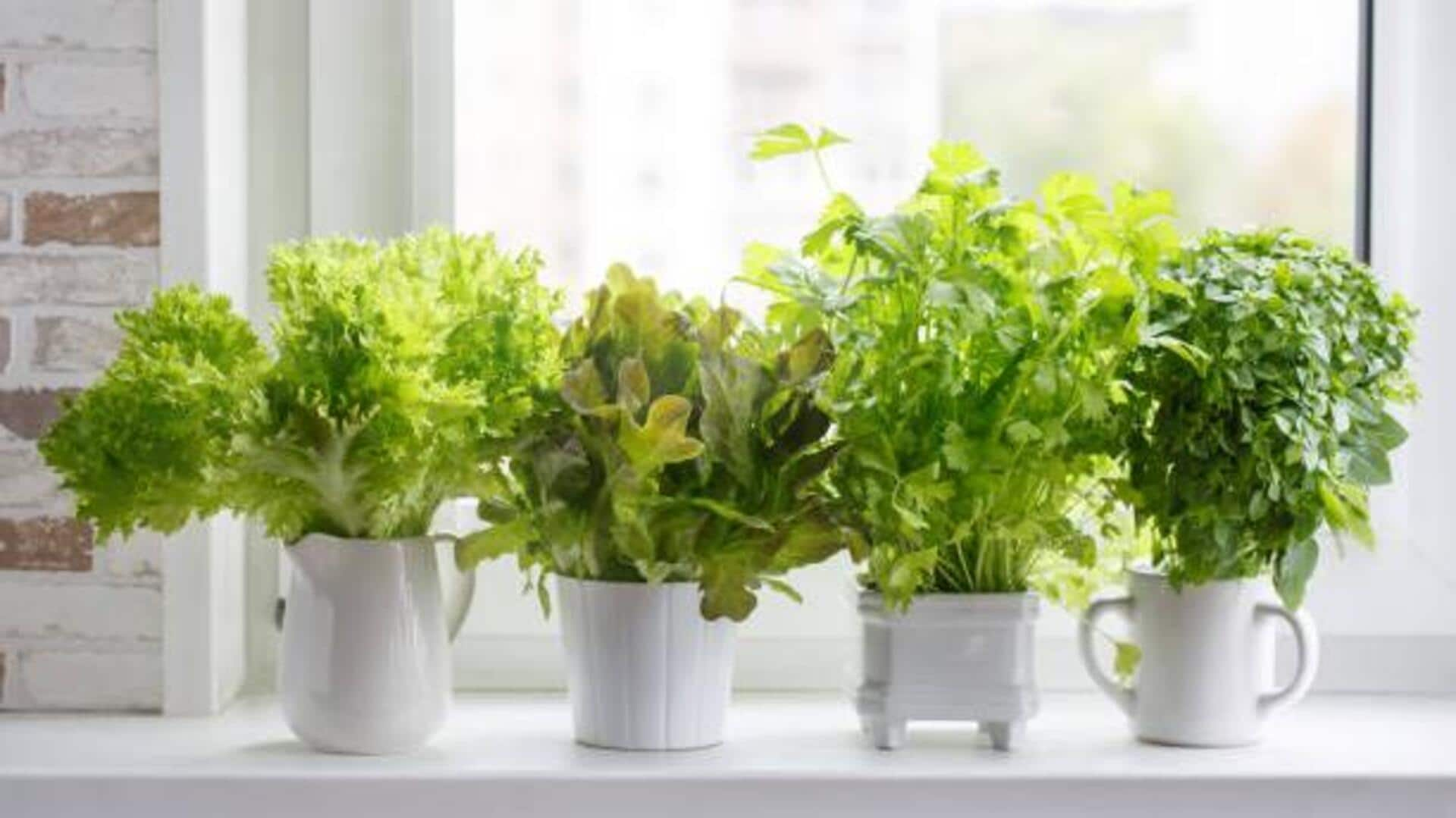
Growing herbs? Avoid these 5 common mistakes
What's the story
Growing herbs at home can be rewarding, giving you fresh flavors and aromas plucked straight from your garden. However, most beginners struggle with the challenges, which can limit the success. Knowing what to avoid is key to growing a thriving herb garden. Here are the five most common mistakes you can make as a novice gardener and how to avoid them.
Watering issues
Overwatering your herbs
One of the most common mistakes people make while gardening herbs is overwatering. Herbs usually prefer well-drained soil and don't do well in overly wet conditions. Too much water can result in root rot, which eventually kills the plant. To avoid this, make sure your pots have drainage holes and use a well-draining soil mix. Water only when the top inch feels dry to touch.
Light requirements
Planting inadequate light conditions
Herbs also need enough sunlight to grow well. Most varieties require at least six hours of direct sunlight each day. If you place herbs in areas with low light, they will grow weak and fail to develop flavor. If natural light is an issue, try using grow lights instead.
Soil concerns
Ignoring soil quality
The quality of soil is important for the healthy growth of herbs. Bad soil can restrict growth and lead to nutrient deficiencies. It's best to use a high-quality potting mix made specifically for herbs. Or, you can improve garden soil by adding organic matter like compost. This way, your herbs get the right nutrients to thrive, giving you better results in your gardening efforts.
Pruning practices
Neglecting regular pruning
Regular pruning is key to encouraging bushier growth in herbs and keeping them from getting leggy or flowering too soon (which may spoil their taste). It's important to pinch back new growth regularly. This encourages fuller plants to develop. Further, it's also important to remove any flowers as they appear, unless you're looking to harvest seeds from your herbs.
Spacing issues
Crowding plants together
Planting herbs too close together restricts airflow around them, increasing the risk of disease spreading between plants due to humidity building around leaves' surfaces during watering sessions or rainy days alike. Ensure adequate spacing between each plant according to its mature size requirements mentioned on seed packets or labels when planting out seedlings into beds/pots, etc. This gives room enough so air circulates freely all around each individual specimen without obstruction whatsoever.